At CMS Funding we know a lot about the way different businesses handle their cash flow and funding. With this in mind, we’re going to offer some simple information on managing cash flow and understanding the importance of working capital. Regardless of the size of your business or industry, each business is trying to leverage their cash effectively.
Understanding your business’s cash flow is more than about how much cash you have in the bank. It’s about having a thorough accounting of the cash you have flowing in and out of your business over time.
Additionally, having sufficient working capital is essential for the viability of your business. Cash flow and working capital differ from one another. Cash flow is the money that is moving in and out of your business. A positive cash flow means more money is coming in than going out in a specified period of time. To increase cash flow you can reduce operating costs, sells assets, accelerate accounts receivable, delay payments or increase sales.
Working capital
This is how much liquid assets a company has on hand. In accounting, you calculate working capital by deducting the liabilities of your business from its assets. Working capital is needed to pay for planned and unexpected expenses, meet the short-term obligations of the business and to grow your business.
Cash Flow vs. Working Capital
Your business may have a positive cash flow but have very little working capital. This is because the business may generate a lot of revenue but also have a similar level of financial obligations.
Cash Balance
Do you know what your cash balance is right now? Knowing what your cash flow is for the week, month, quarter and year is critical to running your business. An accurate cash flow projection can alert you of seasonal changes and prepare you for future cash flow needs so your business won’t be caught short.
Want to Know How We Come Up With a Loan Offer? Let Us Show You!
Three Immediate Cash Flow Indicators:
Record all invoices and payment due dates.
It sounds obvious, but you must keep accurate records of due dates and money owed to your business. Lots of business owners send out their invoices but let their receivables fall behind. This eats away at the available cash on hand and escalates over time. Schedule a regular time each week to work on collections to keep the cash coming in. Having a simple spread sheet of invoices due and due dates will help you actively manage your cash flow.
Record all bills and make a regular payment schedule.
Create a spreadsheet with your bills and enter the outstanding amount due along with the payment terms. Stick to the schedule. Take full advantage of creditor payment terms. If a payment is due in 30 days, don’t pay it in 15 days. Compare your incoming cash flow and your outgoing cash flow and make decisions on the best timing to maximize your cash flow.
Having an idea of your customer’s payment history, your thoroughness of identifying upcoming expenditures and working with your vendors to maximize outgoing cash can help you to prepare for future capital improvements, unexpected repairs and seasonal sales fluctuations.
Reconcile bank and credit cards regularly.
Depending on the size of your business, if it takes more than 30 minutes to reconcile your business checking accounts, consider seeking professional help to streamline that process.
Surviving Shortfalls
As a business owner you’ll probably find yourself in the situation where you lack the cash to pay your bills. It happens to all entrepreneurs. When considering managing cash shortfall it is important to identify the problem as soon as possible. You can prearrange for funding to cover the shortfall before you need it, preferably months in advance. It will give you peace-of-mind and will make it easier to plan and manage your cash more efficiently. Here are a few ways to manage a cash shortfall.
- Delay or stretch your payments. If the shortfall is really tight, wait as long as possible before your business can make its payments.
- Call your clients and encourage early payments. Offer discounts if they pay in full within a time limit. A small discount may be appropriate to get the cash you need.
- Save your cash by evaluating your purchases and consider making installment payments.
- Finally, take the pressure off by finding a source of funding to help your cash flow.





Sorry, the comment form is closed at this time.